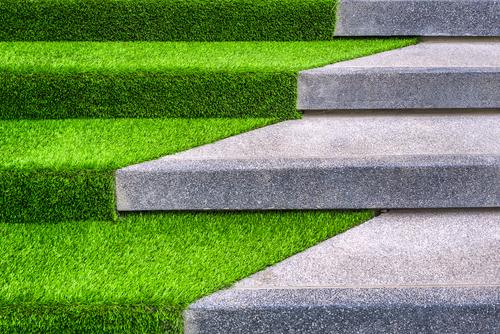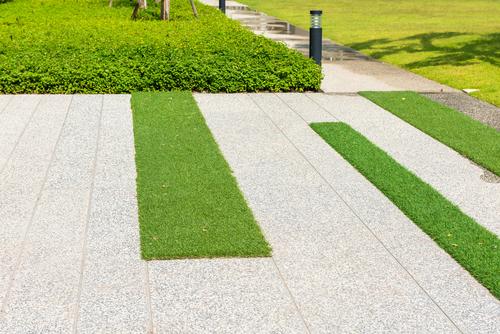When it comes to artificial grass, there are various questions that can arise - can artificial grass be laid on concrete? What are the benefits? Whilst they can all easily be answered, it can often be difficult to find the right answers in one place.
Of course, you can do some research, but there are so many different answers that you may not know which one to believe. So, to help you out, we have created a guide that will not only tell you how to lay artificial grass on concrete but will also inform you about all the benefits of this.

How to Lay Artificial Grass on Concrete
So, can you lay artificial grass on concrete? Laying artificial grass on concrete isn’t much harder than laying it on any other surface. Our grass is extremely versatile, but there are a few additional steps that we take to ensure that it’s done properly. Without these steps, it can be costly to repair. If we were laying artificial turf on soil, we would normally need to strip away all of the grass, weeds and vegetation to prepare the ground for the grass to be laid. But, for concrete, there is no need to remove it as we can simply lay it on top in most cases.
However, we need to check that the concrete on which we are laying the grass drains water properly. This is important as it will help to prevent any issues arising from the drainage of water from the artificial grass, which could result in permanently damp grass. If the concrete doesn’t have proper drainage, it’s recommended to drill holes into the ground to give the water a suitable place to drain. They don’t need to be very big but just enough and wide enough for the water to run through After the holes are made, we fill them with pea gravel to ensure that the water can escape and be properly absorbed.
We also need to check that the concrete is a smooth surface, and any debris like loose stones could damage the artificial turf. To avoid this, we brush it clean to remove any debris sitting on the concrete and then double-check that it’s clear. Any obvious unevenness of the concrete itself can be smoothed down. However, if there are still a few bumps, an underlay is recommended sit between the concrete and the artificial grass. This will help to avoid any ground imperfections that may show through the grass. In almost all cases an underlay is best as it really helps aid in drainage and will prolong the lifespan of the grass and installation – please get in touch for the best possible advice on your space!
However, some people also question how to lay artificial grass on uneven concrete. It can be done depending on the extent of unevenness using a blinding layer of crushed granite stone. After this, the process is the same as it would be if we were laying artificial grass on top of the soil. Quite simply, you can trust that our team knows how to edge artificial grass on concrete and carry out quality installations in all manner of environments.
Benefits of Laying Artificial Grass on Concrete
Artificial grass is a great alternative outdoor flooring option to concrete, gravel, decking, and more. You may be wondering why you’d lay synthetic grass on concrete when you already have a perfectly good concrete surface, but we promise that synthetic turf comes with a number of benefits.
For instance, an artificial lawn not only looks like the real deal, but it mimics the feel of it, too. This means that if you have little ones, they can explore the garden freely without you worrying whether they’ve fallen and hurt themselves. Synthetic turf provides a soft and springy surface, and we can also install it with an additional shock absorber, making it ideal for family gardens.

Speaking of family gardens, artificial grass is also great for pets. This is because it's durable enough for them not to cause damage but absorbent enough that your garden won’t be full of puddles. That being said using artificial grass for pets onto a concrete base must have adequate drainage and regular cleaning will be required.
Above all else, synthetic turf looks great! There’s no escaping the fact that a beautifully manicured artificial lawn looks more inviting than a bunch of concrete slabs.
Why You Would Look to Lay Artificial Grass on Concrete
After reading about the benefits of laying artificial grass, this question should already be answered, but for those who may still be unconvinced, here is a list of reasons why you should look to lay artificial grass on concrete.
- It's much easier to do than if you were laying the grass anywhere else.
- It requires very little maintenance.
- It looks great.
- It’s long-lasting and very versatile.
- It’s safe for both children and pets.
- It’s quick to install
- It looks far better than a boring patio garden.
- And lastly, it will make you smile every time you look at it!
Artificial grass really can be laid anywhere and everywhere. For various reasons, it’s something that you should look into. The hardest part of the process will most probably be finding the right artificial grass for you, as there is a wide variety to choose from, but once you find the right one, there should be nothing standing in your way. So, bring your garden to life and say goodbye to concrete and hello to beautiful green grass.
